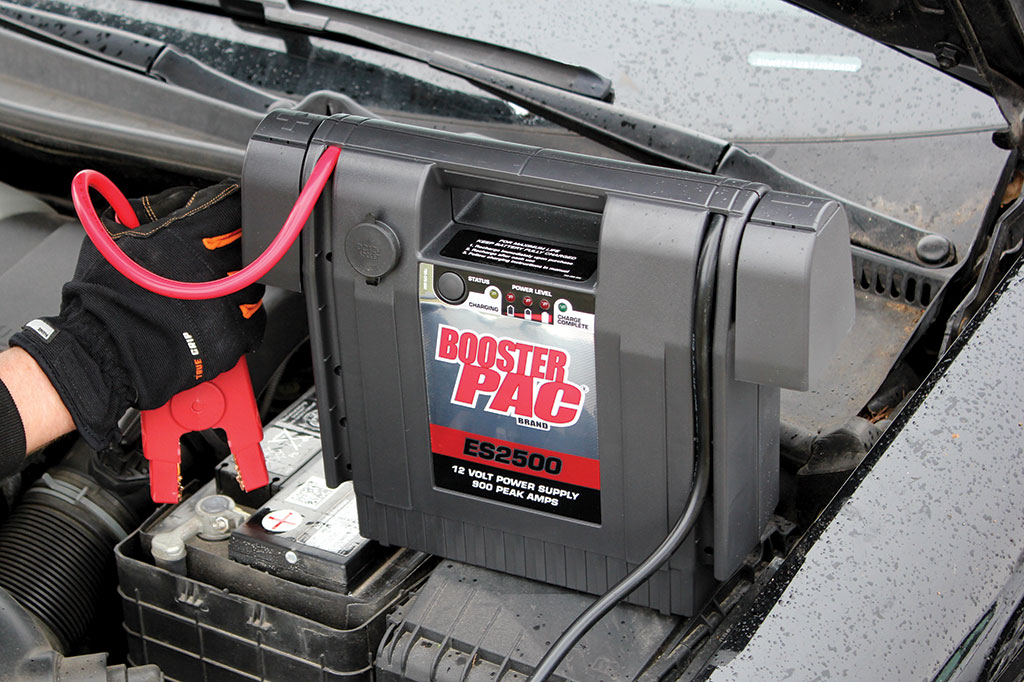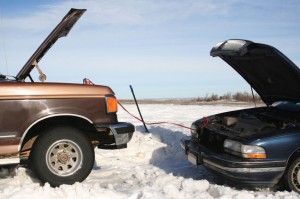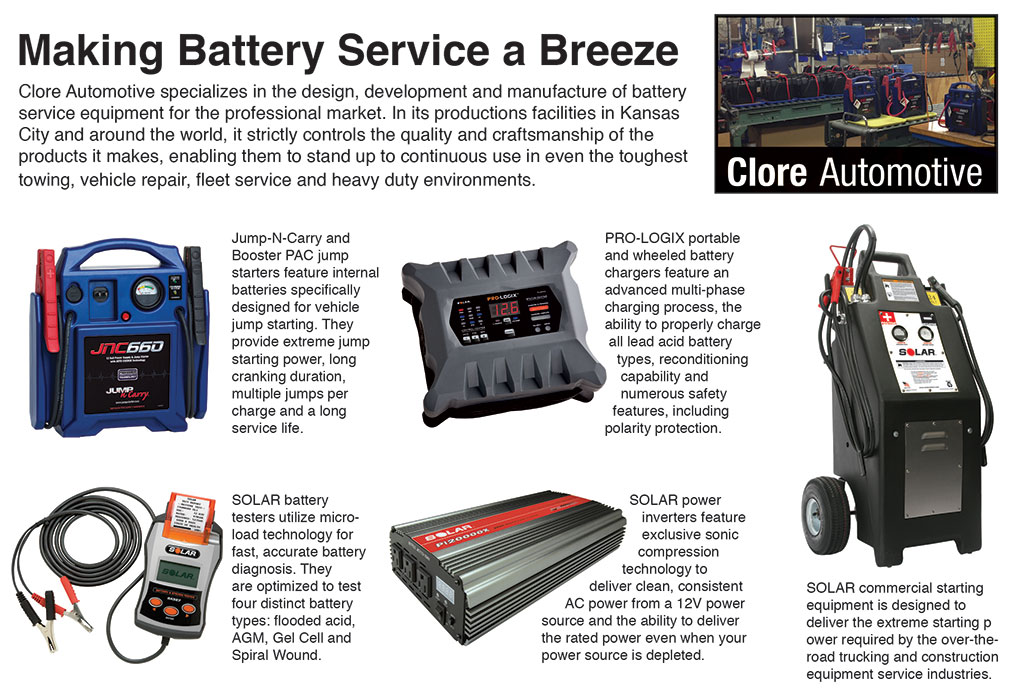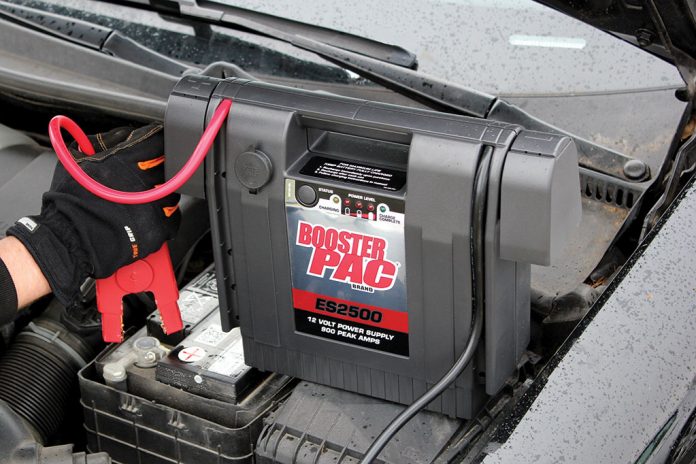
With the incredibly inclement weather seen this winter, it has been common to see TV news articles addressing ways vehicle owners can be prepared and survive the cold and snow. Inevitably, one of the items they talk about is booster cables and the jump starting process. Occasionally, they mention a jump starter, but usually stick to booster cables. As the maker of Booster PAC and Jump-N-Carry jump starters, we, of course, are biased, but the way we see it, a jump starter trumps a set of booster cables every time. Here are the top 5 reasons why.

1. You don’t need to ask for help when you have a jump starter.
The most obvious advantage of a jump starter is the fact that it eliminates the need to find someone to loan their car to be used as a host vehicle, which is required when using booster cables. This advantage isn’t just about the hassle of having to find someone willing to help you. It is also a safety consideration. If you have your jump starter in your trunk, you can pull it out, connect it and get your vehicle started immediately, which is great when stranded at night or in an unfamiliar area.
2. There’s no concern how the disabled vehicle is parked.
You really don’t have to worry about the position in which your disabled vehicle is parked when using a jump starter. Not so with booster cables, where a major consideration is whether the host vehicle will be able to get close enough for the booster cables to reach the disabled vehicle’s battery. We’ve even had a Clore Story submitted by a customer in which this exact problem surfaced, as it was impossible to get another vehicle close to the disabled vehicle. A jump starter, in this case the JNC660, solved their problem.
3. Twice the connections means twice the chance for issues.
With booster cables, you have to make two sets of connections, which is twice the chance for issues. Reversed connections are very dangerous to the operator and the vehicles involved. They can create sparks, which could result in an explosion if battery gases are present. They also can cause damage to expensive electronic components on one or both of the vehicles involved, depending on when in the connection sequence the reverse connection takes place. With a jump starter, there is just one set of connections to make, simplifying what can be a confusing process.
4. Concerns of damage to the host vehicle.

Even when care is taken to ensure a proper connection sequence and starting procedure, there remains the concern of whether the host vehicle is up to the task of providing the additional power needed by the disabled vehicle. If any components of the host vehicle’s electrical system are marginal or suspect, the additional requirements of the jump starting process may push those components over the edge. We remember how we once brought a friend’s car’s electrical system to its knees while borrowing it to use for a jump. We were young, the car was old and it was on the scrap heap within days. This is an extreme example, but there are always risks to the host vehicle when jump starting.
5. Today’s vehicles make booster cables inherently risky.
There are several reasons why using booster cables on today’s sophisticated vehicles brings inherent risks not present when using a jump starter. The first is that noise from the host vehicle can be transferred to the disabled vehicle. This noise can include voltage spikes and other anomalies that could damage sensitive electrical and electronic components on the disabled vehicle. As a jump starter is essentially an extension of the vehicle battery, short of a reverse connection, this concern does not exist.
In addition, the process of removing booster cables after the jump can have a similar damaging effect on vehicle electronics, as warned by Pat Goss on a recent edition of Motor Week and as summarized by Gary Witzenburg on the Green AutoBlog:
As long as the cables are connected,” Goss continued, “the two batteries act as buffers to contain maximum voltage rise. But as soon as the first cable end is removed, the systems go nuts. When the first cable is removed, the voltage reference is gone. It instantly changes from the level of two batteries and two alternators to one battery and one alternator.
During this period of adjustment, the voltage regulator allows the alternator to climb to a very high voltage level. The alternators of both cars are unregulated for a few milliseconds, and during that brief time, the alternator can produce several hundred volts of low-amperage electricity. This high-voltage spike shoots through the electrical systems of both cars.
The effect is like a voltage surge running through a computer. It rarely destroys anything instantly but can weaken components of both vehicles, including engine control computers, alternators, sound systems or any of the dozens of electronic modules in modern cars, and there are usually no immediate symptoms because these parts are merely weakened.”
Goss recommends using either a jump starter or “smart” booster cables to avoid this dilemma. While smart booster cables will help to avoid this specific problem, they cannot resolve issues 1-3 above, which is why we believe a jump starter is the best answer.
Jump Starter Dilemma #1 – Keeping it Charged
As we stated above, we know we’re biased on this one. Of course we think jump starters are the best answer. We’re the jump starter people and we’d always think a jump starter is the right answer. But, many would counter, the big issue with a jump starter is keeping it charged and remembering to charge.
It is true that a depleted jump starter is of no use when your vehicle’s battery is dead, but that’s an easy problem to solve. We offer free recharge alerts for your jump starter so you can be sure it is ready when you need it the most. Just click the link below to sign up for quarterly alerts. It’s quick, easy and will help you avoid the number one dilemma people mention when it comes to jump starters.

Clore Automotive
www.cloreautomotive.com







